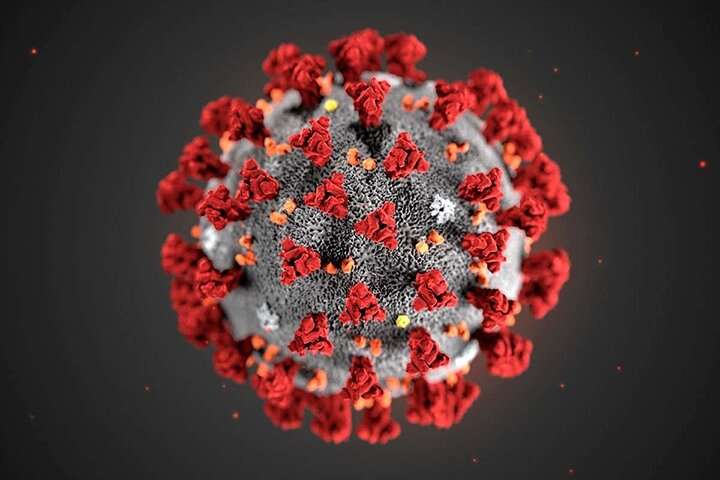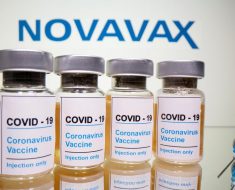
A newly published UC Davis research paper pinpoints what could be “the missing link” in why some COVID-19 patients recover and some don’t.
A blood plasma biomarker discovered in hospitalized COVID-19 patients may not only predict the severity of adult respiratory distress syndrome (ARDS) but further research may lead to inhibiting the progression, a team of eight University of California researchers announced today.
The UC researchers, primarily from the laboratory of UC Davis distinguished professor Bruce Hammock, found that four compounds in the blood of COVID-19 patients are highly associated with the disease. Their paper, “Plasma Linoleate Diols Are Potential Biomarkers for Severe COVID-19 Infections,” is published as open access in the current edition of Frontiers in Physiology.
ARDS, characterized by fluid build-up in the lungs, is the second leading cause of death in COVID-19 patients, next to viral pneumonia, according to the National Center for Biotechnology Information.
“Different outcomes from COVID-19 infections are both terrifying from a human health perspective and fascinating from a research perspective,” said UC Davis lead author and doctoral candidate Cindy McReynolds of the Hammock lab. “Our data provide an important clue to help determine what impacts the severity of COVID-19 outcomes. Initially, we focused on the immune response and cytokine profile as important drivers in severity, but considering what we now know from our study and others in the field, lipid mediators may be the missing link to answering questions such as why some people are asymptomatic while others die, or why some disease resolves quickly while others suffer from long-haul COVID.”
The compounds, known as leukotoxins and leukotoxin diols, originate from linoleic acid, the body’s most abundant dietary fat, said Hammock, who holds a joint appointment in the Department of Entomology and Nematology and the UC Davis Comprehensive Cancer Center and directs the National Institute of Environmental Health Sciences (NEIHS) Superfund Research Program at UC Davis. “The leukotoxins (also called EpOMEs) are converted to the leukotoxin diols (also called DiHOMES) by the soluble epoxide hydrolase we work on.”
“The hypothesis advanced in this paper is that because the leukotoxins have been associated with serious illness and death in humans and dogs and the symptoms are those of adult respiratory distress syndrome, these compounds are biomarkers of pulmonary involvement in COVID-19,” Hammock said. “We also think that it is the conversion of leukotoxin to the toxic leukotoxin diol that causes pulmonary and perivascular edema and this could be leading to the respiratory complications.”
“So the leukotoxins and leukotoxin diols,” Hammock said, “are indicators of respiratory problems in COVID-19 patients as plasma biomarkers. They also present a pathway for reducing ARDS in COVID-19 if we could inhibit the soluble epoxide hydrolase, a key regulatory enzyme involved in the metabolism of immune resolving fatty acids.”
Professor John Imig, director and eminent scholar of the Medical College of Wisconsin’s Drug Discovery Center, who was not involved in the study, said, “The COVID-19 pandemic has demonstrated that coronaviruses can have deadly consequences. Lung distress is a major reason for death in COVID-19 patients infected with the coronavirus (SARS-CoV-2). The findings of McReynolds et al. identified lipids called leukotoxin diols in the blood of COVID-19 patients that could act as a biomarker for lung distress. In addition, leukotoxin diols could be responsible for lung distress in COVID-19 patients. Excitingly, this suggest that therapies to lower leukotoxin diols could treat lung distress and prevent death in COVID-19 patients.”
“The findings presented in this paper bring important attention to a role for oxylipin metabolites in COVID-19 infections,” said Professor A. Daniel Jones of Michigan State University’s Department of Biochemistry and Molecular Biology and director of the university’s Research Technology Facility’s Mass Spectrometry and Metabolomics Core. “Most notably, metabolites known as DiHOMEs which have been previously implicated in lung inflammation show promise for their potential to predict outcomes in COVID patients and guide therapeutic, and perhaps dietary interventions beneficial to human populations.” Jones, who was not involved in the study, serves as secretary of the Metabolomics Association of North America.
The UC Davis scientists used clinical data collected from six patients with laboratory-confirmed SARS-CoV-2 infection and admitted to the UC Davis Medical Center, Sacramento, and 44 healthy samples carefully chosen from the healthy control arm of a recently completed clinical study.
In the introduction, the researchers wrote: “The pandemic coronavirus disease 2019 (COVID-19), caused by severe acute respiratory syndrome coronavirus 2 (SARS-CoV-2), initiates an aberrant immunological response resulting in a wide range of disease severities ranging from asymptomatic cases to severe cases with rapid progression to acute respiratory distress syndrome (ARDS) and death. Patients with severe COVID-19 show evidence of hyperinflammation with increased release of inflammatory cytokines. The role of a cytokine release syndrome, or cytokine storm, in COVID-19 has drawn much attention.
However, recent reports demonstrate that although pro-inflammatory cytokine levels are elevated in severe COVID-19 patients, they are lower than levels usually observed in non-COVID ARDS, suggesting additional factors leads to severe outcomes in some patients. One of the key pathways regulating the immune response to infections is the release of regulatory lipid mediators that have dual functions of driving inflammation [e.g., prostaglandins (PGE2)] or promoting resolution of inflammation and return to homeostasis [e.g., long chain epoxy fatty acids (EpFAs)]. Recent data indicate a role of dysregulated lipid profiles in COVID-19 and identified cytochrome P450 (CYP) metabolites of polyunsaturated fatty acids (PUFA) as potential biomarkers of disease severity
The Hammock lab’s 50-year research on soluble epoxide hydrolase (sEH) and its inhibitors led the professor to found and direct EicOsis Human Health, a Davis-based company that is developing a potent soluble epoxide hydrolase inhibitor for pain relief. Epoxy fatty acids control blood pressure, fibrosis, immunity, tissue growth, depression, pain, inflammation and other processes.
But more recently, the Hammock lab has turned its attention to using sEH as a means to resolve inflammation associated with COVID-19 and the fibrosis that can follow.
Lipid metabolism researcher Ameer Taha of the UC Davis Department of Food Science and Technology pointed out that linoleic acid is an essential fatty acid present in only small amounts in our evolutionary diets. “In addition to nutritional and structural roles of linoleate, minor linoleate metabolites including the leukotoxin diols (also known as DiHOMEs) regulate a number functions including body temperature, cardiac health and vascular permeability. This study cautions that now with dietary linoleate levels at an all-time high, in periods of high stress as with COVID-19, these regulatory functions may become detrimental.”
The paper is the work of Hammock, McReynolds and Jun Yang of the Department of Entomology and Nematology and EicOsis Human Health; Irene Cortes-Puch of the Department of Entomology and Nematology, EicOsis Human Health, and the Department of Internal Medicine’s Division of Pulmonary Critical Care and Sleep Medicine; Resmi Ravindran and Imran Khan of the Department of Pathology and Laboratory Medicine; Bruce G. Hammock of UC Davis Department of Veterinary Medicine, Aquatic Health; and Pei-an Betty Shih of the UC San Diego Department of Psychiatry.
Source: Read Full Article





